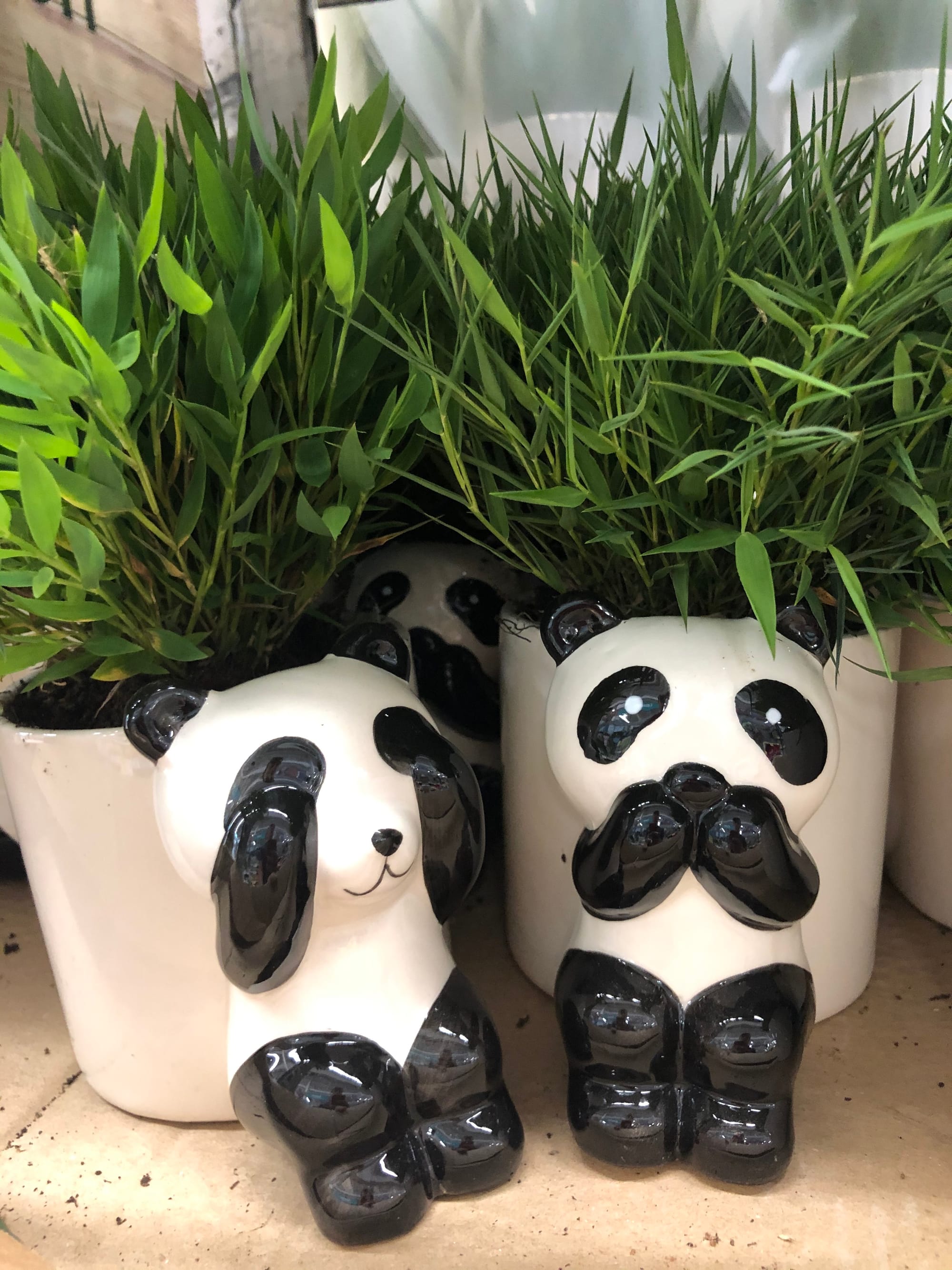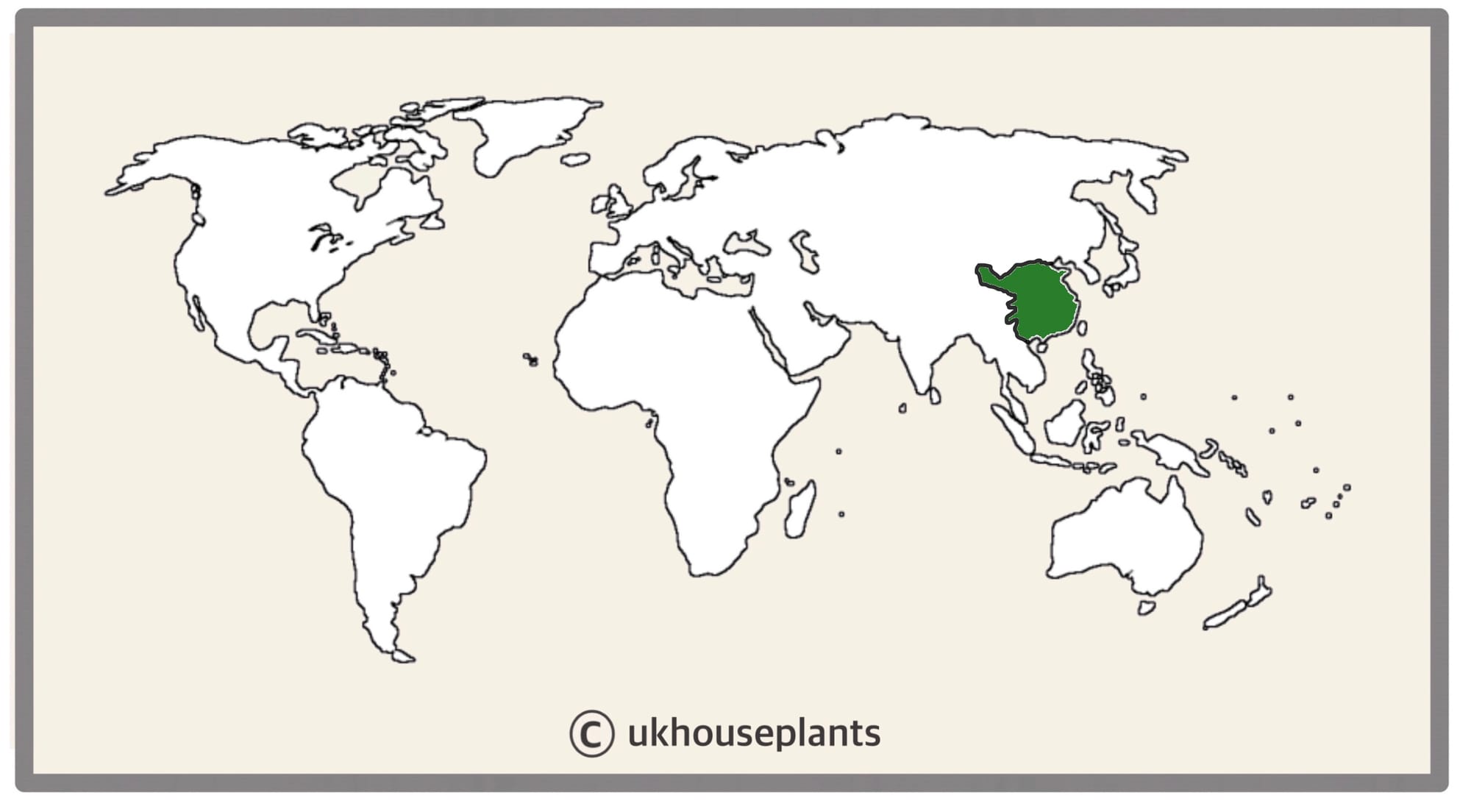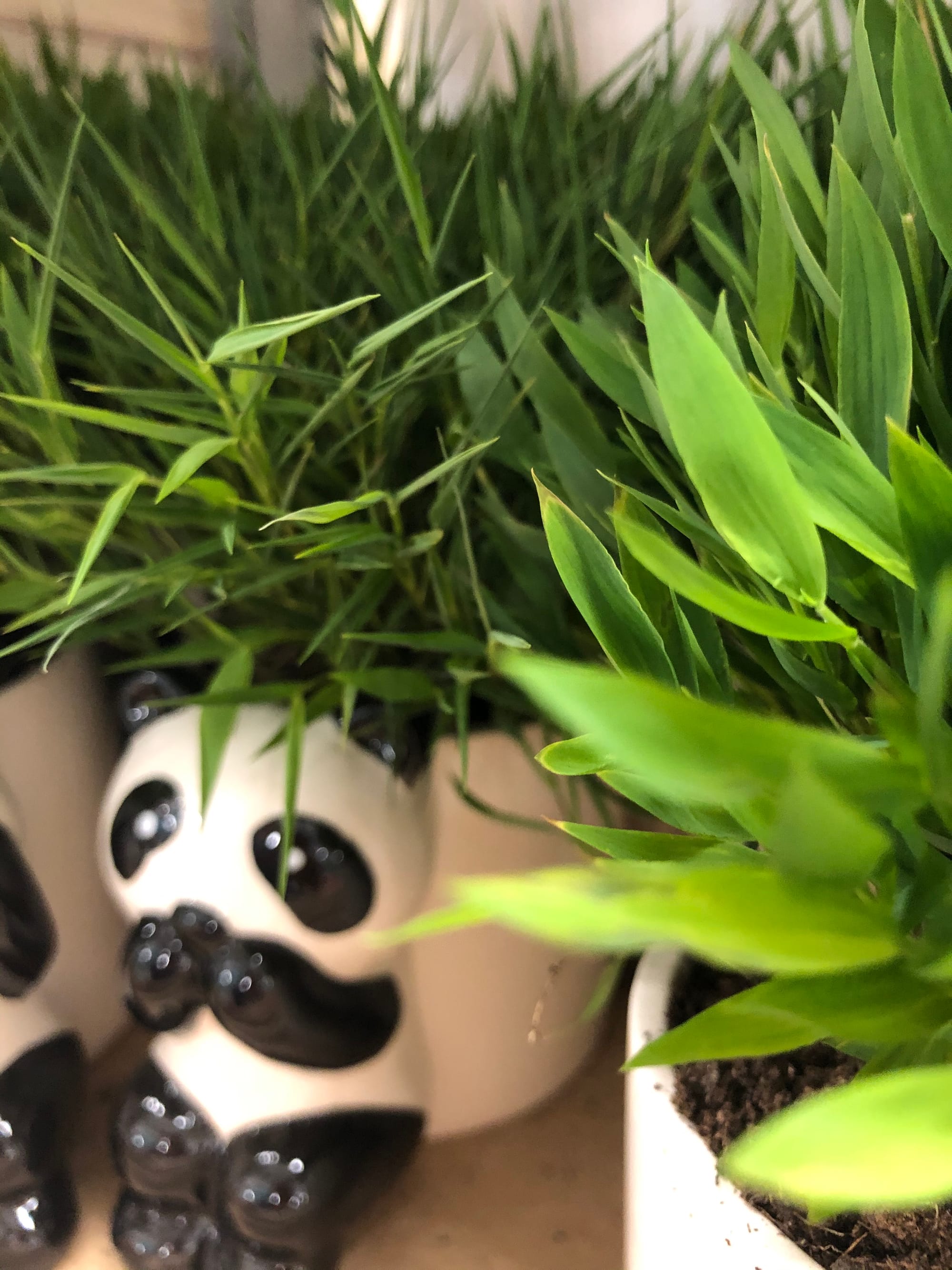
Phyllostachys reticulata
This article is tailored for Bamboo; click here to learn more about Lucky Bamboo (Dracaena).
Contents
- Top Tips
- Location, Water, Humidity & Fertilisation
- Common Issues
- Origins, Temperature, Propagation, Repotting & Toxicity.
Need the answer to a specific plant query? Book a 1-to-1 video call with Joe Bagley, the website's friendly author, to overcome and address your niggling problem! Available on iMessage, WhatsApp, Facebook Messenger & more.
Top Tips & Info
- Care Difficulty - Easy
- Provide a bright, indirect location away from deep shade or excessive sunlight. A north-facing windowsill is perfect for good, healthy growth.
- Allow the soil's top third to dry in between waters, reducing this slightly further in the autumn and winter.
- Fertilise using a 'Houseplant' labelled feed every four waters in the spring and summer, reducing this to every six in the colder months.
- Indoor Bamboo will require a larger pot every two years, using a 'Houseplant' labelled potting mix in the spring or summer months.
- Pests aren't usually an issue; however, keep an eye out for Mealybugs & Scale.
Location & Light - 🔸🔸🔸
Indoor Bamboo will love a bright location with little to no direct sunlight. We'd recommend a windowsill, or a nearby table is the perfect location for this plant, as a lack of natural light penetrating the compost's face may result in root rot and soil mould. Although a splash of morning or evening sunlight is accepted, be wary of over-exposure that may result in sun-scorch and dehydration.
Water - 🔸🔸
For those who are forgetful waterers, this species of Bamboo is the one for you. Apart from its easy-care nature, they have the ability to withstand short-lived droughts and partial neglect. Watering from the top is best, using either lukewarm tap water or fresh bottled water for best results. Keep the soil evenly moist, allowing the top third of the compost to dry out. Remember to reduce waters slightly in the autumn and winter to reinforce its dormancy period. Under-watering symptoms include yellow or pale-looking leaves, little to no growth, brown crispy new growth and gradual decline. If your Bamboo is situated in a partially sun-filled position (unadvised), only let around the top quarter of the soil dry out in between waterings. Over-watering symptoms include yellowed leaves, little to no growth and death; these issues are usually due to a lack of heat or sunlight, being over-potted, an incorrect soil type or waterlogging.
Humidity -🔸
Average room humidity is more than enough to satisfy this plant. Never situate it within a few metres of an operating radiator due to the enriched chance of crisping foliage.
Fertilisation - 🔸🔸
Feed every four waters during the growing period and every six in the autumn and winter, using a 'Houseplant' labelled fertiliser. Never apply a 'Ready to Use’ product into the soil without a pre-water first, as it may burn the roots and lead to yellowed leaves.
Common Issues with Indoor Bamboo
Root or leaf rot is a common issue among specimens sat in too dark environments with prolonged soil moisture. Symptoms include yellow or rotten leaves, mouldy soil, stunted growth and a rotten base resting against the soil. Take the plant out of the pot and inspect health below the compost line. If the roots sport a yellow tinge, you're good to go, but if they're brown and mushy, action must be taken immediately. More information about addressing root rot can be found on this link.
A lack of leaves on the soil's face could be the product of excess moisture settling on the foliage. Although watering from the top is best, it's recommended to use the bottom-up method if you're a messy waterer. For specimens that have a bare head, improve growing conditions by using this method and increasing the light levels and air circulation. Take stem cuttings to promote a bushier appearance above the soil line - scroll down to 'Propagation for more information. Finally, always remove yellowed or rotten debris from the soil as it could harbour both bacterial and fungal diseases which will continue the plant's decline.
Too much sunlight will lead to sun scorch, with typical signs including browning or crispy leaves, dry leaf-edges, sunken leaves or stunted growth. Although too little light will cause over-watering issues, excess sunlight will be a detriment to the plant as well. If yours has fallen short of this, reduce the amount of the sun considerably and always be mindful of environmental shock (when two locations offer too different growing conditions). Remove some of the affected leaves and increase waters slightly.
Spider Mites are small, near-transparent critters, that'll slowly extract the chlorophyll from of its leaves. Have a check under the leaves, most notably along the midrib, for small webs and gritty yellow bumps. Click here to read our article about the eradicating Spider Mites, along with some extra tips that you may not find elsewhere!
Origins
Indoor Bamboo fall under the genus, Phyllostachys, which was first penned by Philipp von Siebold & Joseph Zuccarini in 1843. Its name originates from modern Greek, translating to 'leaf spike' that refers to the foliar structure. The species' natural distribution is thrown across eastern China, ranging from Beijing to the Yunnan Province, which is also where Pilea peperomioides naturally occur!
 The Distribution of Phyllostachys reticulata.
The Distribution of Phyllostachys reticulata.
Temperature
12° - 30°C (50° - 86°F)
H1b (Hardiness Zone 12) - Can be grown outdoors during the summer in a sheltered location with temperatures above 12℃ (54℉), but is better to remain indoors, too. If you decide to bring this plant outdoors, don't allow it to endure any direct sunlight as it may result in sun-scorch and dehydration. Regularly keep an eye out for pests, especially when re-introducing it back indoors.
Spread
Up to 1m in height and 0.3m in width, with the ultimate height being reached in 5 - 8 years. Expect around 5 - 10cm (2 - 3.5 inches) of new growth per season.
Pruning & Maintenance
Remove yellow or dying leaves, and plant debris to encourage better-growing conditions. While pruning, always use clean utensils or shears to reduce the chance of bacterial and fungal diseases. Never cut through yellowed tissue as this may cause further damage in the likes of diseases or bacterial infections. Remember to make clean incisions as too-damaged wounds may shock the plant, causing weakened growth and a decline in health.
Propagation
Via Seed, Basal Offsets & Stem Cuttings.
Rhizomatous Offset Division (Pups) (Easy) - Separating the basal offsets into their own pot will not only expand your plant collection, but it'll also slow the process of becoming pot bound. The best time to divide is when the specimen is around 30cm (12 inches) in height, and during the spring. Gently brush away some of the soil to gain better access to the pup's base (lower stem, via the rhizomes) where the roots will be housed. While using a clean pair of secateurs or scissors, cut the stem with at least two root strands attached to its base. Set the pup in an appropriate-sized pot with adequate drainage and a 'Houseplant' labelled compost. The ideal location would provide bright, indirect light and temperatures above 15℃ (59℉). Maintain evenly moist soil, allowing the top third to dry out in between hydrations. After a month or two, treat it like a matured specimen by using the care tips mentioned above!
Stem Cuttings (Difficult for Indoor Bamboo)
- Choose the healthiest, most established branches from the leading growths. Those that are around 10cm (4 inches) are most likely to root due to stored energy and growth rates. Cut directly between two of the leaves, approximately 15cm from the stem's terminal, using a clean pair of scissors to reduce bacteria count. Remove the lower half of the leaves, too.
- Use a 7cm (2.7 inches) pot that has suitable drainage holes - plastic or terracotta are both acceptable in this instance. 'Houseplant' labelled compost is best as it'll provide adequate drainage and airflow around the roots. Alternatively, place the cutting back into the soil of the mother plant to promote a bushier appearance, as mentioned in 'Common Issues'.
- Set the cutting into the compost, keeping the foliage above the soil line. Be sure to submerge the bottom nodes into the soil, or else root development will hinder. A severe disease that can threat most cuttings is 'Blackleg', which occurs when the bottom wound becomes infected, typically caused by water-logging with too little light.
- Avoid direct sunlight and maintain near-moist soil to prevent dehydration. After twelve weeks in the compost, treat the specimen as a mature plant by following the care advice penned above. Root growth will always develop before new foliage, so bear this in mind if yours is a little slow to get off the mark!
Flowers
Unfortunately, it's doubtful for an Indoor Bamboo to bloom indoors, due to the unfavourable growing conditions found in typical domestic settings.
Repotting
Repot every two years in the spring, using a 'Houseplant' labelled potting mix and the next sized pot with adequate drainage. Hydrate the plant 24hrs before tinkering with the roots to prevent the risk of transplant shock. For those situated in a darker location, introduce an extra amount of perlite and grit into the deeper portion of the pot to downplay over-watering risks. Click on this link for a detailed step-by-step guide on transplantation, or via this link to learn about repotting with root rot.
Book a 1-to-1 video call with Joe Bagley if you'd like a personal guide to repotting your houseplant. This will include recommending the right branded-compost and pot size, followed by a live video call whilst you transplant the specimen for step-by-step guidance and answer any further questions!
Pests & Diseases
Keep an eye out for mealybugs, spider mites, whitefly, root mealybugs, scale & thrips. Typical diseases associated with this genus are leaf-spot disease, botrytis, powdery mildew & root rot. Click here for more information about how to identify and address any of these issues.
Toxicity
This plant is classified as highly poisonous. If parts of the plants are eaten, vomiting, nausea and a loss of appetite could occur. Consumption of large quantities must be dealt with quickly; acquire medical assistance for further information. Its sap may cause irritation on the skin of sensitive people.
Retail Locations
Online Stores.
Book a 1-to-1 Call with Joe Bagley
If you need further advice with your houseplants, book an advice call with ukhouseplants' friendly and expert writer today! This can be done via a video or audio call on most apps, including Facebook, FaceTime & Skype. A ten-minute call costs £5.99 (US$7), or £15.99 for thirty minutes. You can ask multiple questions, including queries on plants, pests, terrariums, repotting advice and anything in between. Please consider supporting this service to keep ukhouseplants thriving!
